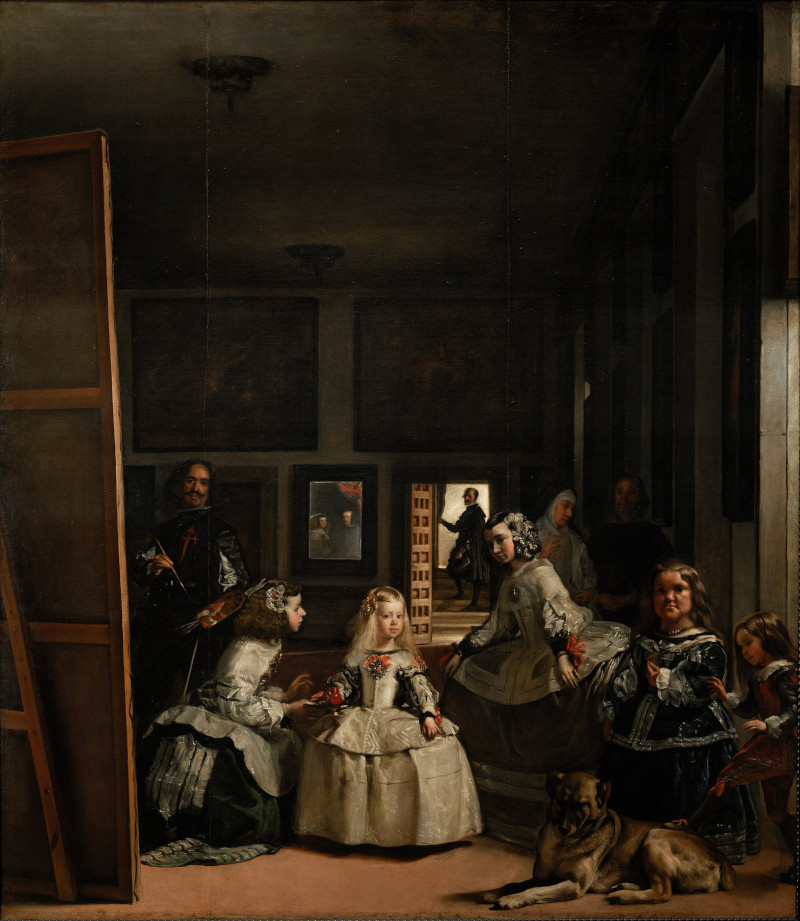Here we examine canvas art, and specifically the most famous canvas artists, dating back centuries.
Introduction to Canvas Art
Art has traditionally been applied to all manner of different materials, with different formats dominating at different points in art history. Canvas art is particularly common today, and involves cotton or linen surfaces which are framed along the back to make a strong, tight surface on which the artist can apply their artistic designs. Canvases for art are extremely versatile, and can be used for all manner of different applications such as oil, acrylic, watercolor, and mixed media.
The initial use of canvases can be traced back to the Italian Renaissance, particularly with the likes of Titian and Andrea Mantegna. Wood panels had been used prior to that, and whilst they still persisted throughout the Renaissance, slowly canvases would rise in usage. Much the same can be said for oils, which slowly replaced the use of egg tempera, but the transition was slow and covered one region of Italy at a time, before slowly spreading elsewhere.
Sacred and Profane Love, from 1514, in one of the earliest examples of an artist painting directly onto canvases, though the canvas medium has changed over the centuries that have passed since. Lamentation of Christ by Andrea Mantegna appeared in around 1480-1490 and marked the use of canvases by this artist, at a relatively late point in his career. It would take many years before this art form became common place across the country, though having leading names such as Mantegna and Titian working in this manner would have added considerable momentum to it.
Which Types of Canvas do Artists Use?
There are many different types of canvas paintings, with a number having been developed relatively recently. Companies continue to experiment in order to find cheaper alternatives from different materials, and canvas printing is now a global business, with many countries exporting printed canvases. Canvas rolls are an interesting options for artists who want more control over the size of their canvases, where they might choose to stretch the piece themselves, once they decide on suitable dimensions for each artwork.
- Cotton Canvas
- Linen Canvas
- Synthetic or Polyester Canvas
- Primed Canvas
- Unprimed or Raw Canvas
- Stretched Canvas
- Canvas Rolls
What is the Most Popular Canvas?
Cotton canvases are currently the most popular canvas for amateur artists, thanks to their lightweight nature, as well as their competitive pricing. Professional artists will tend to require more customised mediums, sometimes even producing them personally in order to achieve the highest quality results possible.
For pre-made art, most manufacturers will go for cotton too, when producing canvas prints. They are particularly common in the art market, typically as home decor. Photographs can be reproduced at high quality, and they are also pretty versatile to allow custom designs. Lighter prints can also be hung on different types of walls without causing any damage.
List of Famous Canvas Artists
We have provided a list of canvas artists below as a means to outlining the history of canvas art, and its evolution from the earlier use of wooden panels. We have also supplied a variety of uses here, covering Renaissance artists up to more modern alternatives, including techniques such as drip painting. In truth, the number of artists using canvases today alone runs into the many hundreds of thousands, if not millions, and so the list below is just a guide to highlights from the history of canvas art.
Titian
Titian was a significant canvas artist, for he came about at a time when wooden panels were the main choice for Italian artists. Alternatively, some would work with plaster, which forced them to quickly apply paint on the wall before the material dried. Titian worked with wooden panels for a number of years before switching to canvases in later life, as shown with the likes of Sacred and Profane Love, as found below. He believed that this alternative material would better react to his use of oils, and so he continued to use canvases for the rest of his career after this point.
 by Titian.jpg) Sacred and Profane Love (Oil on Canvas) by Titian
Sacred and Profane Love (Oil on Canvas) by Titian
Andrea Mantegna
Mantegna took a similar journey to Titian, and The Lamentation over the Dead Christ, as seen below, is one of his earliest works on canvas. The Renaissance was all about innovations, with the use of oils coming in from northern Europe, and the likes of Michelangelo and Leonardo starting to advance technique to extraordinary levels. Mantegna is sometimes underrated in terms of his influence, as he also advanced other techniques including perspective with some breathtaking artworks which figure prominently within Italian art history.
 by Andrea Mantegna.jpg) The Lamentation over the Dead Christ (Tempera on Canvas) by Andrea Mantegna
The Lamentation over the Dead Christ (Tempera on Canvas) by Andrea Mantegna
Diego Velazquez
The iconic Las Meninas features a self portrait of Velazquez, alongside a number of family members of the court in which he served at the time. We find him close to his canvas and easel, at a time when canvas art was truly dominant within European art, after its earlier rise in the Renaissance era. Velazquez's paintings remain the best known of the Spanish Baroque era.
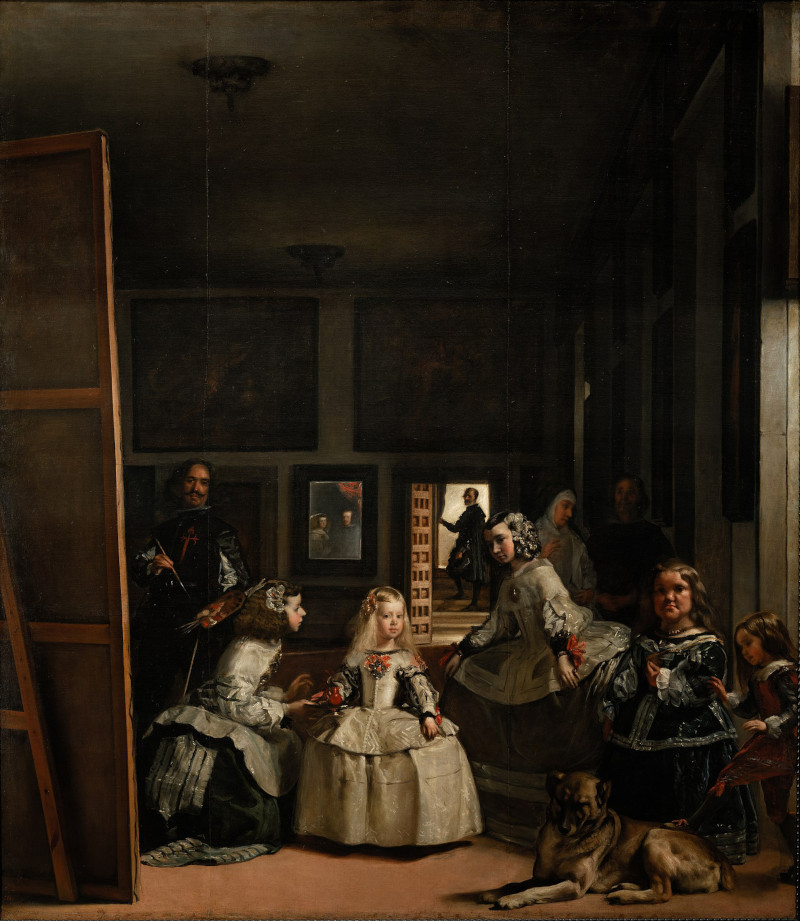 Las Meninas by Diego Velazquez
Las Meninas by Diego Velazquez
Artemisia Gentileschi
Here we find Artemisia Gentileschi hard at work, within a self portrait by the artist herself. She became one of the leading female artists of the Baroque era, and overcame a number of barriers in order to succeed in a similar manner to her father, Orazio. She was a skilled portrait painter who could also deliver dramatic content which was typical of the Baroque era in the 16th century.
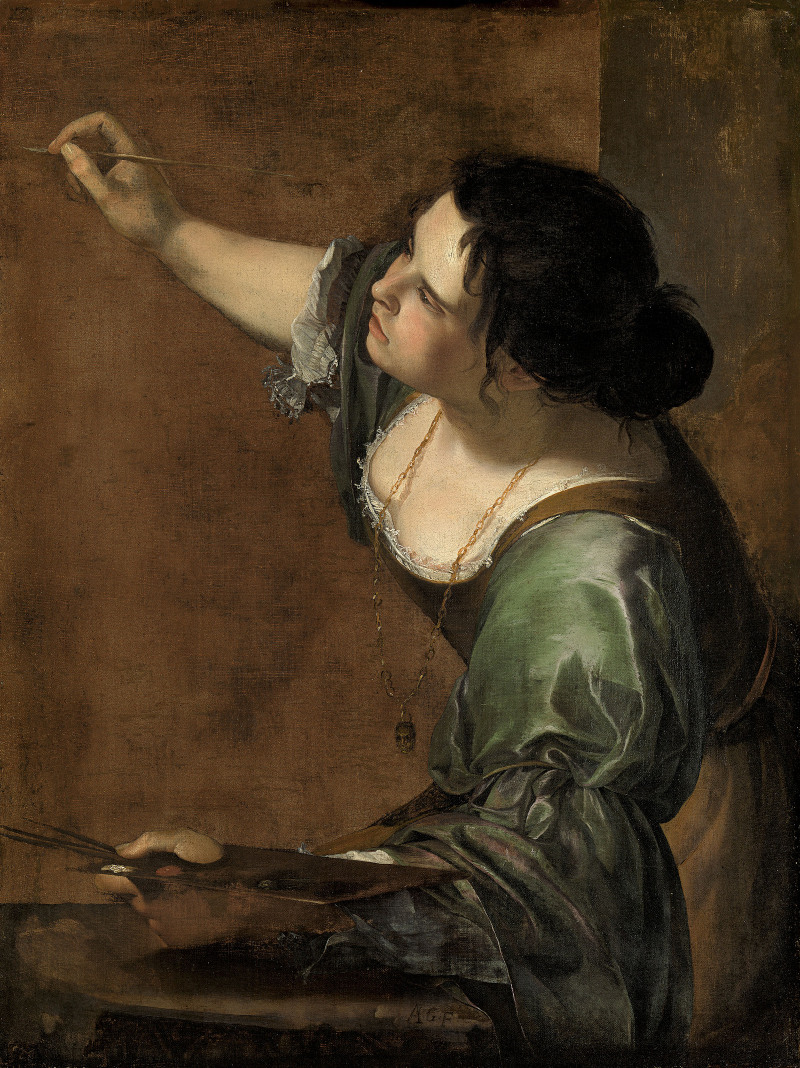 Self-Portrait as the Allegory of Painting by Artemisia Gentileschi
Self-Portrait as the Allegory of Painting by Artemisia Gentileschi
Judith Leyster
In many ways, the techniques of oil painting have not changed much since the times of Judith Leyster. Here we find her sat in front of a canvas, putting together her latest conposition. Once the canvas was set up on the easel, and colors were mixed on the palette, she would be able to work in a relaxed manner, slowly putting each part of the work together. By the time of the Dutch Golden Age, both oil painting and the use of canvases was thoroughly established as the main way of producing art at that time, though other methods also started to emerge such as woodcuts and engraved prints.
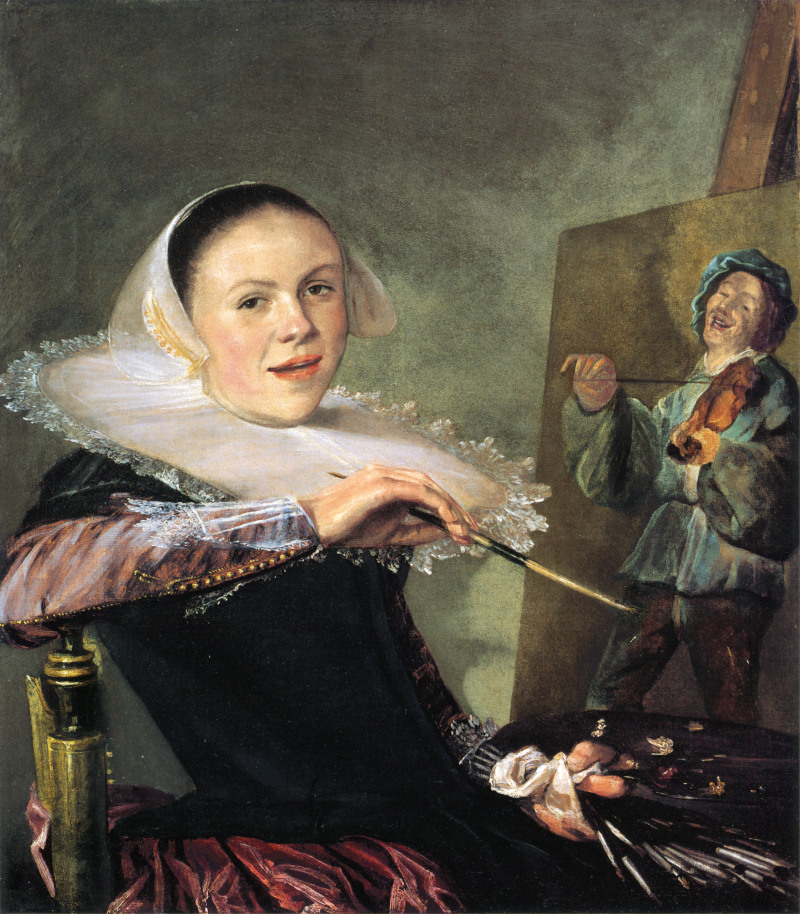 Judith Leyster Working on a Canvas Portrait
Judith Leyster Working on a Canvas Portrait
Claude Monet
This artwork features Monet taking advantage of the lightweight canvases, setting up outside, and working 'en plein air'. This was key to the success of the Impressionists, who studied light and atmosphere in great detail. Ultimately, their accuracy was achieved through careful observation of live events, which was achieved by working within the very environments that they were painting. Monet remains the most famous member of this group, and is captured in this painting by fellow member, Renoir.
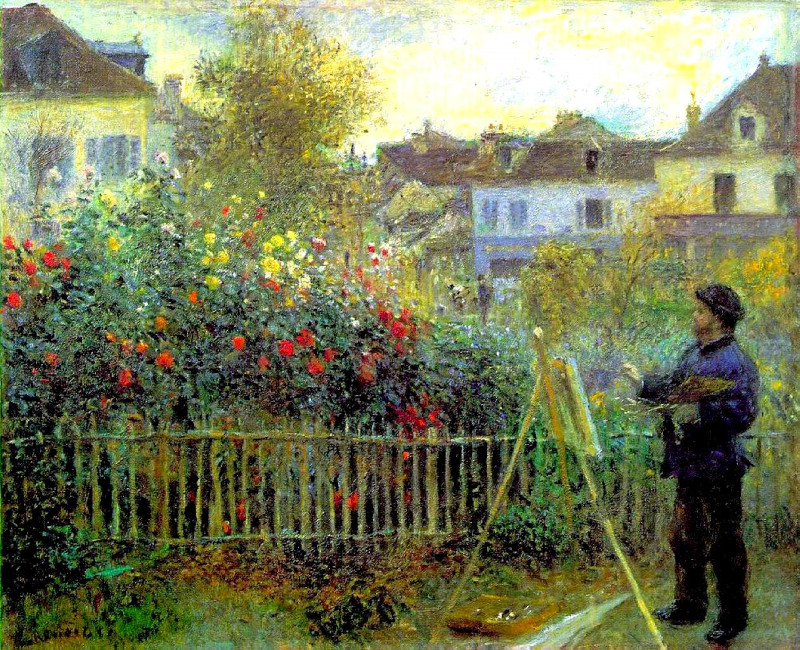 Claude Monet Painting in his Garden by Pierre Auguste-Renoir
Claude Monet Painting in his Garden by Pierre Auguste-Renoir
Vincent van Gogh
In the work below by Paul Gauguin we find Van Gogh hard at work, painting his famous sunflowers. His friend would later buy a number of the series, and hang them up in the Yellow House, which the two shared for a short period. Vincent got in touch with his tools like no other, even drinking his oil paints at one point, as his mental health continued to struggle. He chose to work with fairly standard sized canvases, forced to work within a relatively short budget as his works struggled to sell during his own lifetime. Many will see elements of the canvas showing through in his work, in areas with less paint, whilst other sections would have thick layers of oils, giving a sculptured quality to some of his expressive artworks.
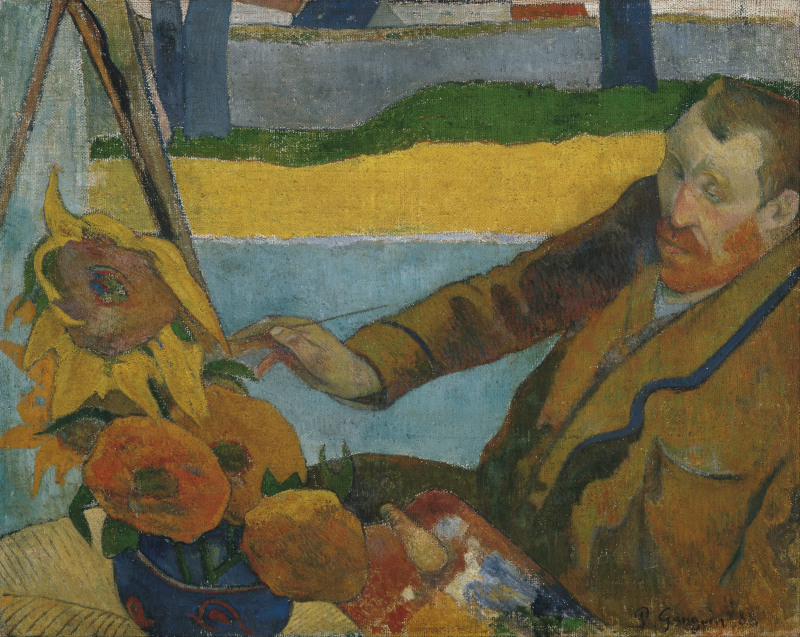 Vincent van Gogh Painting Sunflowers by Paul Gauguin
Vincent van Gogh Painting Sunflowers by Paul Gauguin
Jackson Pollock
Jackson Pollock lay huge canvases on the floor of his studio in order to apply paint without gravity dragging it downwards. He would complete the entire work in this manner, and then hang it, once dried. He experimented with different colors, and the methods in which he dripped paint onto these canvases. He had originally worked in different ways, earlier in his career, but Pollock remains most famous for this unique artistic technique which ultimately brought him the most success.
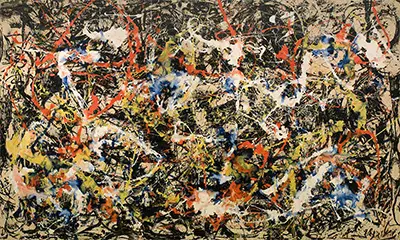 Convergence Dripped Paint onto Canvas Painting by Jackson Pollock
Convergence Dripped Paint onto Canvas Painting by Jackson Pollock
Mark Rothko
Mark Rothko used large murals to overcome the viewer with colours that would stretch beyond the limits of their peripheral vision. His palettes were reduced down to just a few colors, and he produced lozenges of tone, purely abstract and would also keep his painting titles brief and vague in order to allow the viewer to decipher his works in whatever manner they wished. This represented the true endpoint for abstractionism, and this style of abstract art would help to establish Mark Rothko as one of the leading figures of American modern art.
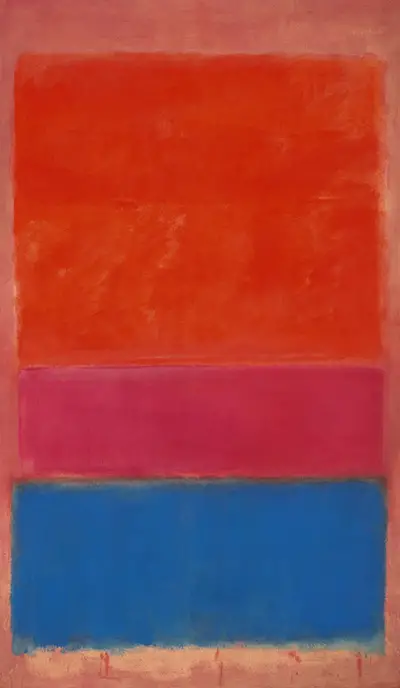 No 1 Royal Red and Blue Large Mural Canvas by Mark Rothko
No 1 Royal Red and Blue Large Mural Canvas by Mark Rothko
Jean-Michel Basquiat
Jean-Michel Basquiat was an artist who transitioned from street art to an established, exhibiting painter over the course of his career. Basquiat used a language of symbols across multiple works for symbolic value and placed them within his abstract world of modern art. Crowns represented royalty which he would apply to non-monarchs, including celebrities. Basquiat also spoke out about perceived injustices which he witnessed in the US at that time. As he started to sell his work, it became necessary to consider galleries as his environment, when all of his success had been achieved working on walls of buildings in his local community, and with little intention of them being moved from their original locations.
Early Origins of Canvas as a Painting Surface
Canvas was a material derived from the Middle East during the medieval period and trade would bring new opportunities for artists, such as this, when previously only wooden panels had been used across Europe. Wood was heavy, and not easy to form together for larger pieces, and so alternatives were warmly received. Canvases were initially constructed from woven hemp, hence the term 'cannapaceus', or 'made from hemp' from Latin.
Italian artists discovered canvases in the 15th century, at around the same time that oils were starting to replace egg tempera, and the two in combination worked particularly well. This transition would then be re-enforced in later movements, with the Baroque artists embracing it fully, and taking it to other parts of the European continent. In later centuries, artists would start to experiment with the canvases themselves, with some artists moving away from the traditional rectangular format, but most change occured in the way that artists delivered their brushstrokes, through the rise of Impressionism, Expressionism and Contemporary art.
Emergence of Canvas Art during the Renaissance
Canvas art may not have appeared in the Renaissance era were it not for two factors - trade and the influx of oil painting techniques from northern Europe. Trade brought in new materials and craft techniques, which first brought canvases to the attention of artists. They then realised that the growing interest in oils were better suited to canvases, and so the combination of "oil on canvas", with which we are all familiar, would start to take hold. It would then be the turn of the Italians to influence others, and slowly this combination would dominate European art, before spreading to the US in later centuries.
This combination of oil on canvas dominated for centuries, until the 20th century, at which point mixed media brought new ideas into the fold. Whilst canvases are still the most popular choice, particularly for amateur artists, creativity and expression dictates that many will now try to find alternatives in order to keep their work as unique as possible. Some will even return to the old methods of the medieval era, with handmade dyes, and wooden panels, locally sourced. Environmental concerns may also impact artist's choices in the next few decades.
Canvas as a Preferred Medium in the Baroque Period
Baroque artists contined with canvases for their work, and took advantage of its key benefits, including the ease with which huge artworks could be delivered. Many Baroque painters produced dramatic, bold compositions featuring a plethora of figures, and larger canvases allowed them to incorporate huge amounts of detail. Only a few institutions had buildings large enough for these works, but they would normally be specially commissioning these pieces. With smaller private donors, then the artists could reduce the size of their work, perhaps for single portraits or other, more intimate pieces.
Altarpieces could be specially shaped to match the dimensions of the intended room in which the artwork was to be hung. Sections could be cut out of curved to adapt to specific architectural features and this was particularly helpful for religious paintings within old buildings. The only downside of custom shaped canvases is that when they were moved elsewhere for preservation, then the unusual shapes would need to be explained and adapeted to.
Canvas Art in the Age of Impressionism
The relatively light nature of canvases proved hugely important within the Impressionist era, as artists could easily work outdoors and study the effects of changing light, but without having to drag around heavy wooden panels as would have been the case prior to the Renaissance era. This ability to be more mobile as artists clearly impacted the rise of landscape art as a whole, with the likes of Claude Lorrain rising earlier than the Impressionists, and using canvases himself.
The only alternative would have been to sketch on paper in outdoor settings, before then capturing the oil or tempera on wooden panels from the comfort of a studio. This would have lost some of the coonect between the artist and his inspiration, though, and so more success was achieved by directly painting from live observation, and this attention to light and color would also impact the direction of 19th and 20th century art more generally, particularly within Europe.
The Shift to Modernism and Canvas as an Experimental Medium
Modernism made use of the flexibility of canvases to try out all manner of experimental art. These entirely neutral surfaces provided endless opportunities for expression, which could include throwing or blowing paint at a surface. The ability to easily customise the size of each canvas also helped artists to explore the significance of the size of their artworks, such as in the way Rothko's murals which stretch beyond the viewport, essentially engulfing our vision with color in every direction, in order to achieve a particular impact.
Canvas Art in the 20th Century: From Abstraction to Pop Art
Street art, including graffiti, allowed artists to work directly on walls and buildings in their local communities and this served as an alternative to canvas art which was seen by some as part of the establishment by the 20th century. Oil painting was still dominant, but alternatives such as mixed media were gaining traction with movements such as Conceptual art and Minimal art. Eventually, some of these wall artists would then achieve mainstream success, and start to apply their talents to canvas art instead, which could then be hung around in formal galleries.
There were also Pop artists who would use different printing techniques, such as silk screen, which again marked the potential for art to start to evolve away from the use of canvases. Some artworks will now be applied onto stretched canvases after being completed, and even some very old artworks from the Renaissance and Baroque era have been transferred to canvases in order to protect them for the long term.
Canvas Prints and Digital Revolution in the Art World
Canvas prints have allowed the public to enjoy famous art within their own homes, at relatively cheap prices. Additionally, these art prints can be re-arranged with ease, and also custom sized depending on the tastes and requirement of customers and their homes. Some like to change their displays from time to time, to freshen up rooms in their homes, just as curators will do with the permanent collections that they are entrusted to protect and celebrate.
Printing has become more widely available, with print-on-demand options and the distribution of high resolution images of famous paintings allowing art fans to enjoy works in their own homes. This can be achieved at relatively nominal expense, with most people already owning a home printer of their own. Those with larger budgets can purchase specific items online at potentially a higher quality, but also there is a huge choice of artworks available to suit all tastes.
The Role of Canvas Art in Contemporary Interior Design
Canvas art prints are key elements to the interior designs of homes and offices. Minimalist, lightly colored rooms can be lifted with the simple addition of a carefully selected print. With such an array of sizes and styles, designers can pick the perfect item to finish off a room. These could be picked on content, such as a landscape painting, or a still life depiction of flowers, or the choice might be made on the particular style of the work. For example, a modern home will be suited to modern art, such as a Mondrian or Klimt print, for example, whilst an older style home would better suit art from the Renaissance and Baroque era - these are all issues that an interior designer will need to consider.
Preservation and Conservation of Canvas Artworks
Canvas artworks have proven far easier to preserve than most alternatives, indeed a number of old works have been transferred to canvas in order to better protect them. Older options tend to suffer from age, and are also harder to move into temperature-controlled environments. Leonardo's Last Supper, for example, was produced on plaster and it quickly started to deteriorate, requiring multiple stages of work dating back centuries. Today's efforts tend to be turned to street art, which was never intended to be displayed in galleries or protected, but rather to connect directly with the public within their own community.



